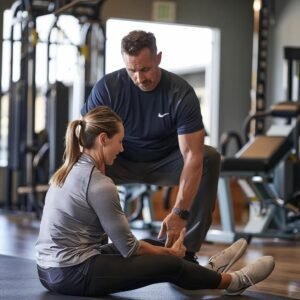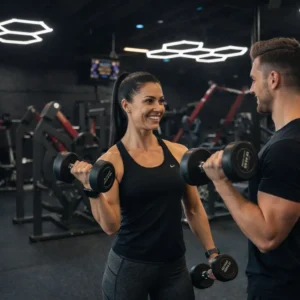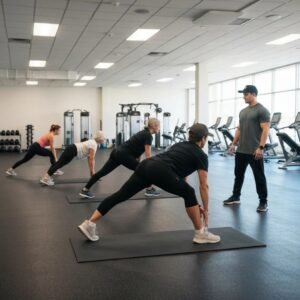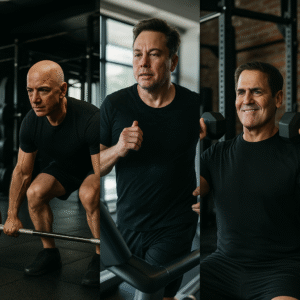Welcome to our latest blog post where we delve into the fascinating world of fitness instruction techniques. In this era of health-conscious living, the demand for effective fitness instruction has skyrocketed. But what sets apart a mediocre fitness instructor from an exceptional one? The answer lies in the science behind their techniques. From motivating clients to pushing them past their limits, successful fitness instructors employ a myriad of strategies backed by psychological and physiological principles. In this article, we will explore how understanding human behavior, biomechanics, and exercise physiology can elevate fitness instruction to new heights. Whether you’re a seasoned fitness professional looking to refine your skills or someone aspiring to enter the field, this blog post will provide invaluable insights into the science behind successful fitness instruction techniques. Get ready to unlock the secrets to motivating, inspiring, and guiding individuals on their journey to optimal health and wellness.
Understanding Neuroplasticity: How the Brain Adapts to Fitness Instruction
Neuroplasticity, the brain’s remarkable ability to reorganize itself by forming new neural connections, is a fundamental concept in neuroscience. While often associated with cognitive functions like learning and memory, neuroplasticity also plays a crucial role in the realm of fitness instruction. Understanding how the brain adapts to exercise can offer valuable insights into designing more effective training programs and optimizing performance outcomes. In this blog post, we’ll explore the science behind neuroplasticity, its implications for fitness instruction, and practical strategies for leveraging this phenomenon to enhance learning and skill acquisition.
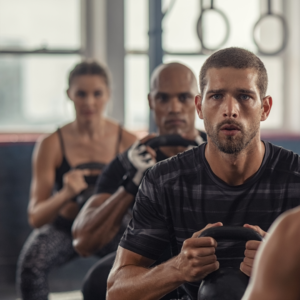 The Basics of Neuroplasticity
The Basics of Neuroplasticity
Neuroplasticity refers to the brain’s ability to reorganize its structure, function, and connections in response to experience, learning, and environmental changes. At the cellular level, it involves processes such as synaptic pruning, dendritic branching, and neurogenesis. Understanding these mechanisms is essential for appreciating how exercise influences brain plasticity and vice versa.
Exercise and Brain Health
Research has demonstrated that regular physical activity can have profound effects on brain health, including promoting neuroplasticity. Exercise stimulates the release of neurotransmitters like dopamine and serotonin, which play key roles in mood regulation and cognitive function. Moreover, aerobic exercise has been shown to increase the production of brain-derived neurotrophic factor (BDNF), a protein that supports the growth and survival of neurons.
Motor Learning and Skill Acquisition
Fitness instruction involves teaching individuals new movement patterns and motor skills, which relies heavily on neuroplasticity. By understanding the principles of motor learning, trainers can design exercises and drills that optimize the brain’s capacity to adapt and refine motor skills over time. This may involve incorporating variability, progression, and feedback into training programs to facilitate skill acquisition and retention.
Cross-Training and Cognitive Benefits
Cross-training, or engaging in a variety of physical activities, has been shown to enhance cognitive function and neuroplasticity. By challenging the brain with diverse movement patterns and stimuli, cross-training can promote the development of robust neural networks and improve cognitive flexibility, attention, and memory. Fitness instructors can incorporate cross-training principles into their programs to promote holistic brain health and performance.
Neuroplasticity and Rehabilitation
Neuroplasticity plays a crucial role in rehabilitation following injury or neurological disorders. Through targeted interventions and exercise-based therapies, individuals can harness the brain’s plasticity to facilitate recovery, restore function, and adapt to new motor demands. Fitness instructors working with clients undergoing rehabilitation can apply principles of neuroplasticity to design personalized exercise programs that support recovery and functional reintegration.
The Power of Visualization: Enhancing Fitness Instruction through Mental Imagery
Visualization, or mental imagery, is a cognitive technique that involves creating vivid mental representations of desired outcomes or experiences. While commonly used in sports psychology to enhance athletic performance, visualization also holds great potential in the realm of fitness instruction. By harnessing the power of mental imagery, trainers can help clients improve movement quality, enhance motivation, and achieve better results. In this blog post, we’ll explore the science behind visualization, its applications in fitness instruction, and practical strategies for incorporating this powerful tool into training programs.
Understanding Mental Imagery
Mental imagery involves creating detailed, multisensory representations of actions or scenarios in the mind. When individuals visualize themselves performing specific movements or exercises, they activate many of the same brain regions involved in actual physical execution. This process strengthens neural pathways associated with the desired actions, priming the body for improved performance.
The Cognitive Basis of Visualization
Visualization capitalizes on the brain’s capacity to simulate experiences and outcomes internally. By engaging sensory, motor, and emotional networks, mental imagery can influence perceptions, beliefs, and behaviors. Research suggests that repeated visualization can lead to neuroplastic changes in the brain, enhancing motor skills, and facilitating learning.
Enhancing Movement Quality
Visualization can be used to refine movement patterns and enhance movement quality in fitness instruction. By mentally rehearsing exercises with precision and attention to detail, clients can improve coordination, balance, and proprioception. Trainers can guide clients through visualization exercises to help them better understand and execute complex movements with greater proficiency.
Boosting Motivation and Confidence
Visualization is a powerful tool for boosting motivation and confidence in fitness instruction. By mentally rehearsing successful workouts or achieving fitness goals, clients can cultivate a sense of self-efficacy and belief in their abilities. Visualization can also help individuals overcome performance anxiety or self-doubt by mentally preparing for challenging situations and envisioning positive outcomes.
Goal Setting and Achievement
Visualization is closely linked to goal setting and achievement in fitness instruction. By visualizing specific, realistic goals, clients can clarify their intentions and create a roadmap for success. Regularly visualizing progress towards these goals can increase motivation, focus, and perseverance, ultimately leading to greater success in reaching fitness milestones.
The Art of Adaptation: Customizing Fitness Instruction for Diverse Populations
Fitness instruction is not one-size-fits-all. As trainers, it’s imperative to recognize and cater to the diverse needs, abilities, and preferences of our clients. In this blog post, we’ll explore the art of adaptation in fitness instruction, highlighting key strategies for customizing workouts to accommodate individuals from various backgrounds and with different physical capabilities.
- Understanding Individual Differences: Recognize that every client is unique, with distinct fitness levels, goals, health considerations, and cultural backgrounds. Take the time to assess each client’s needs and preferences before designing their workout program.
- Personalization is Key: Tailor exercises and training protocols to suit the specific needs and abilities of each client. Modify intensity, volume, and exercise selection based on factors such as age, fitness level, injury history, and personal preferences.
- Inclusivity and Accessibility: Create an inclusive training environment where clients of all backgrounds and abilities feel welcome and supported. Ensure that facilities, equipment, and instruction are accessible to individuals with disabilities or special requirements.
- Effective Communication: Communicate openly and effectively with clients to understand their goals, preferences, and any challenges they may face. Use clear and concise language to explain exercises and provide feedback, ensuring that clients understand and feel empowered during their workouts.
Conclusion
The science behind successful fitness instruction techniques is paramount in achieving optimal results, as exemplified by Results Transformation Center (Sparks). By integrating evidence-based approaches, personalized training methodologies, and a deep understanding of human physiology and psychology, Results Transformation Center has consistently delivered exceptional outcomes for its clients. Through innovative strategies and a commitment to ongoing research and refinement, they have established themselves as leaders in the fitness industry, proving that a combination of scientific rigor and client-centered focus is key to unlocking the full potential of fitness instruction.[/vc_column_text][/vc_column][/vc_row]



